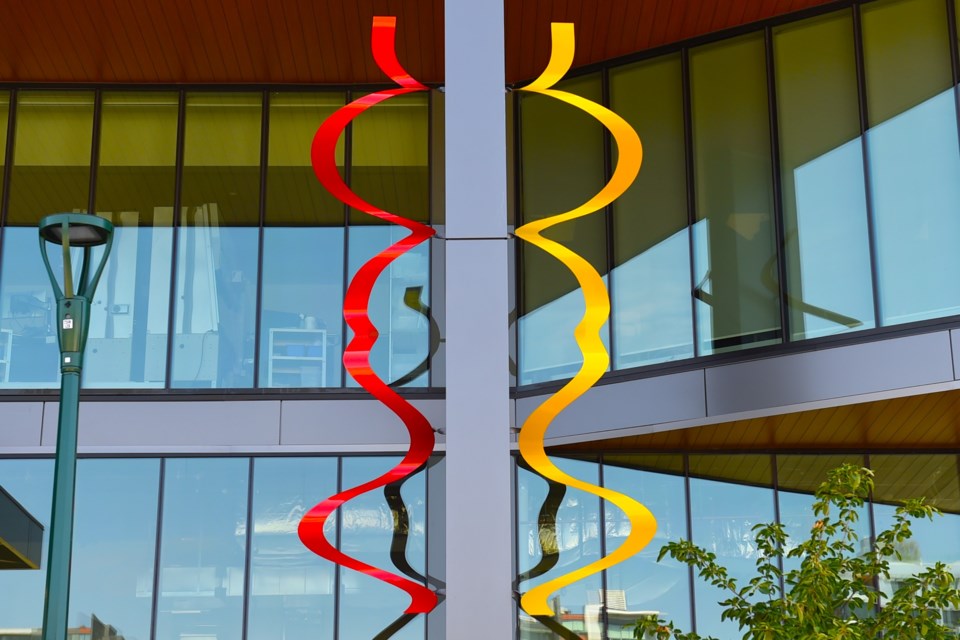What does sound look like?
For the sibling duo of Sanaz and Mani Mazinani it takes a vibrant, ribbon-like form, at least for their new series of 11 sculptures called Circulation. The duo have installed the series at 110 and 150 W 4th Ave in Vancouver's Mount Pleasant neighbourhood.
The pieces are meant to be a three-dimensional physical representation of sound waves; additionally, their symmetry and design also mirrors DNA.
"Circulation makes visible the unseen forces that pulse through and around us. Like a photograph that captures a fleeting moment, the sculptures create a pause," reads part of the artists' statement on the piece.
It's all very related to science and perception, which fits with Circulation's location around the new Abcellera buildings.
"We relate that to perception," says Mani."How we hear things, how our bodies receive information from the outside world, and through our perception, how these things all connect."
The soundwaves represented were specifically chosen as ones audible to humans and help with recovery and rejuvenation, says Sanaz. The new sculptures are a departure from how people typically think of soundwaves, Mani adds, and that's on purpose.
"Sound waves are traditionally represented in this two-dimensional image," he says. "That's not really how sound works because sound radiates into space in three, even four dimensions if you want to get technical."
An individual's perception also played a big role.
"We're interested in perception, or the way people experience the world, as in where they stand, who they are," says Sanaz. "Life can be quite different, so it's really a matter of position and perspective."
To address that, Circulation can be viewed from many different angles, especially the piece that's at street level, where each step will give the viewer a slightly different impression.
Science is built into the colours, as well.
"Using basic primary colours is a strategy, in fact, to appeal to a more universal palette," says Mani.
That's based on the fact that human vision is based on three colours.
"As artists, we have the freedom to express these ideas in whatever way our imagination takes shape," says Mani.
"There's no lack of science, it's just a different expression," he adds. "They have all the symbolism and science behind them."
Making Circulation was a long process; in all it took the Mazinani's about 3.5 years. Based in Toronto, they worked with local fabricator Aggressive Tube Bending to make the steel alloy (the ground-based sculpture) and aluminum (the hanging pieces) art.
While other places said it was impossible to do, particularly the precise curves, they were quite straightforward, says Sanaz. It helped that they had a B.C.-made piece of augmented reality technology to see the digital rendering of the art while they formed the physical piece.
Sanaz says her own learning has been a big positive throughout the creation of Circulation.
"One thing I truly love about making sculptures is you learn so much about the process and materials," she says.



